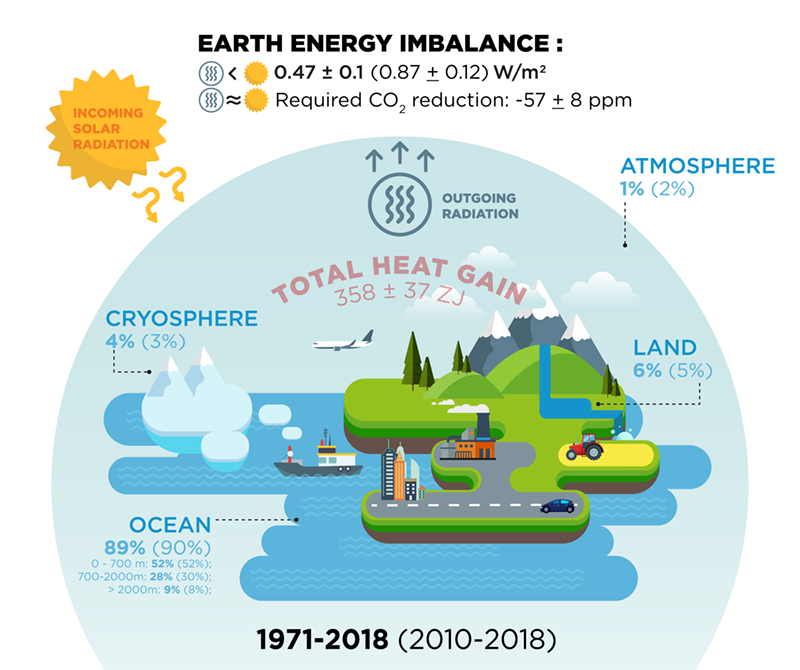Heat stored in the Earth system: where does the energy go?
7 September 2020
Earth System Science Data (ESSD) announces the first publication of a comprehensive Earth energy imbalance (EEI, von Schuckmann et al., 2020, https://doi.org/10.5194/essd-12-2013-2020) that reports energy (heat) accumulating in the ocean, ice, land, and atmosphere. This group of more than 30 researchers from scientific institutions around the world tracked and quantified global heat distributions over the past 58 years (1960–2018) to answer the urgent question where does the heat go?
. Starting from a heat accumulation of 358±37 ZJ (1021 J) over the period 1971–2018 driven by input of greenhouse gases inducing a positive EEI of 0.47±0.1 W m2, the authors identify 89 % going into the ocean, 6 % warming the land, 4 % melting of grounded and floating ice, and 1 % warming the atmosphere. The authors show clearly that, due to large heat capacity, the ocean dominates the Earth energy inventory. The results also show that EEI not only continues, but it increases: the EEI amounted to 0.87±0.12 W m2 during 2010–2018. Stabilization of climate, the goal of UNFCCC since 1992 and emphasized by the Paris Agreement of 2015, requires that EEI be reduced to approximately zero to restore Earth's system quasi-equilibrium. These results indicate that the amount of CO2 in the atmosphere would need to be reduced from today's value of 410 ppm to roughly 350 ppm to increase heat radiation to space by 0.87 W m2, bringing Earth back towards energy balance. This single number, the EEI, serves as a fundamental metric to allow the scientific community and the public to assess how well the world responds to the task of bringing climate change under control. Assembling this global Earth's heat inventory required careful analysis of decades of high-quality climate observations from around the planet, observations combined with concerted international multidisciplinary collaboration that – in the authors' view – should continue. In particular, this research benefited from long-term attention by the Global Climate Observation System (GCOS). These authors make all data and calculations freely and openly available through the Copernicus open-access journal ESSD, which collaborated in this case with the World Data Center for Climate at Deutsche Klimarechenzentrum.
Contact: Karina von Schuckmann (karina.von.schuckmann@mercator-ocean.fr)
